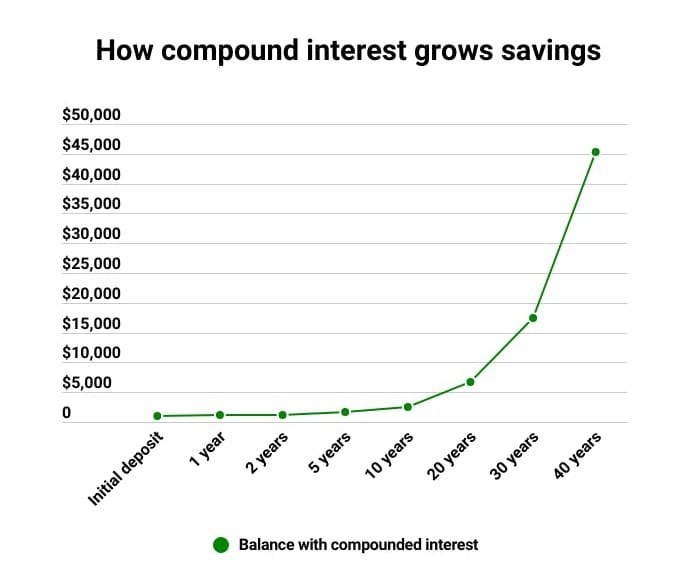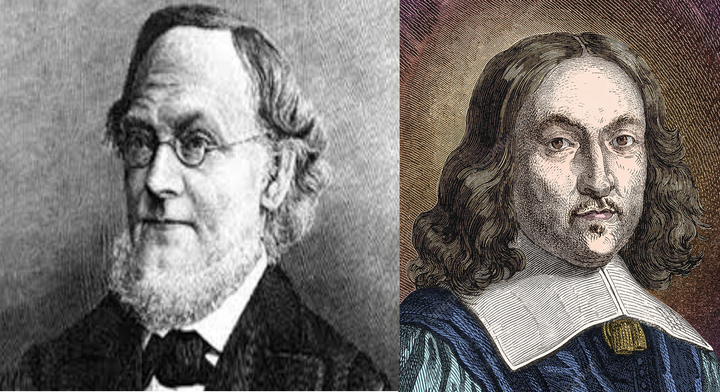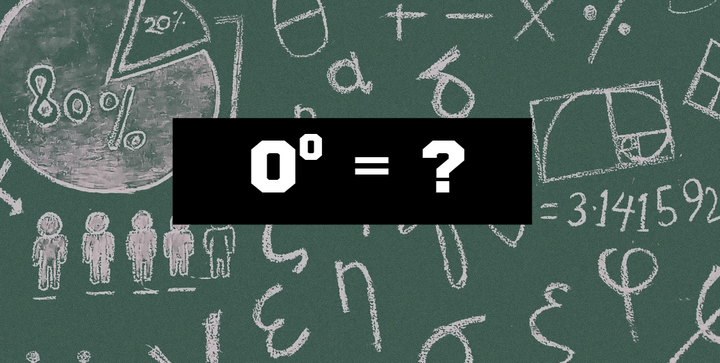A Mathematical Proof That An Annulus Is Not Simply Connected
Discover the intricate proof behind why an annulus is not simply connected in topology. This post provides a comprehensive explanation for both math enthusiasts and students seeking a deeper understanding of this fundamental concept.

To begin, let's assume the annulus is centered at the origin. Then, choose a base point ${p}$ on the inner circle of the annulus. The inner circle can be represented by the equation $x^2 + y^2 = r_1 ^2$. For simplicity, let's choose $p = (r_1 ,0)$.

Now, let's define a loop somewhere between the outer and inner circle of the annulus. A loop is a continuous function that maps the interval $[0,1]$ to the annulus, with the starting and endpoint being the same. Let's define this function as $\gamma (t)$. When $t = 0$, the loop starts at the base point ${p}$, and as ${t}$ increases from ${0}$ to ${1}$, the loop traces a path along the loop inside the annulus. When $t = 1$, the loop returns to the base point ${p}$, completing the loop. Thus, this means that $\gamma (0) = \gamma (1) = p$.

Alright, we now have a function that defines a loop inside the annulus. Next, we have to use a process called homotopy to continuously deform this loop into another loop - which, in this case, is the inner circle of the annulus. To do this, we need to transform the loop so that the resulting loop will be equal to the inner circle of the annulus. Let's represent this function as $H(t,s)$, where ${H}$ is homotopy, ${t}$ is the same parameter we defined earlier in the loop function $\gamma (t)$, and ${s}$ is a new parameter that displays the progress of homotopy on the loop function.
Then, $H(t, s)$ will have the following properties:
- When $s = 0$, $H(t, 0) = \gamma (t)$, meaning that no transformation has occurred to the original loop.
- When $s = 1$, $H(t, 1)$ represents that the original loop has deformed into a loop lying on the inner circle of the annulus.
- For $0 < s < 1$, $H(t, s)$ indicates the intermediate stages of the transformation of the original loop into the deformed loop on the inner circle. For example, $H(t, 0.5)$ will show that the loop is halfway into the deformation process to become a new loop lying on the inner circle of the annulus.
With this, we can now form an equation that defines the continuous transformation that deforms the original loop $\gamma (t)$ to a new loop on the inner circle of the annulus. The equation is as follows:$$H(t,s) = (1 - s)(\gamma \left( t \right)) + s(\frac{{\gamma (t)}}{{|\gamma (t)|}}r_1 )$$
Let me break down the above equation so it's easier to understand:$$(1 - s)(\gamma \left( t \right))$$ Here, I am multiplying the original loop function by a scale factor that depends on the parameter ${s}$. As $s$ varies from $0$ to $1$, the weight $(1 - s)$ decreases from $1$ to $0$. This means that when $s = 0$ (no deformation by homotopy), the weight is $1$, so $(1 - s)(\gamma (t)) = \gamma (t)$, which means the term represents the original loop. When $s = 1$ (maximum deformation by homotopy), the weight is $0$, so $(1 - s)(\gamma (t)) = 0$, which means the term contributes nothing to the transformation. As $s$ increases from $0$ to $1$, the influence of the original loop in the transformation gradually diminishes. In other words, this term displays that the original loop gets progressively more deformed as $s$ increases and will completely loose its influence when $s = 1$.$$s(\frac{{\gamma (t)}}{{(|\gamma (t)|)}}r_1 )$$ In this term, I am describing the transformation of the original loop to the inner circle. In the context of the equation, the expression $\frac{{\gamma (t)}}{{|\gamma (t)|}} $ normalizes the loop, which means converting the original loop into a unit-length loop while preserving its shape and direction. A unit-length loop is a loop whose points lie on a circle with radius $1$, centered at the origin. By dividing $\gamma (t)$ by its distance from the center, $|\gamma (t)|$, I can obtain a point on a unit circle centered at the origin, effectively scaling the loop down to have a radius of $1$. This process maintains the shape and direction of the loop but ensures that it has a unit length.
After obtaining the normalized loop, I then multiply it with $r_1$ to scale the normalized loop to have the same radius as the inner circle of the annulus. However, I still need to multiply the entire term with $s$ to ensure that the transformation gradually takes place as $s$ increases, as well as to make sure that I can combine the two terms by linear interpolation.
In the context of the homotopy $H(t, s)$, linear interpolation is used to smoothly transition between the original loop $\gamma (t)$ and the transformed loop on the inner circle of the annulus. The equation $H(t, s)$ combines two weighted terms: $(1 - s)(\gamma (t))$ and $s(\frac{{\gamma (t)}}{{(|\gamma (t)|)}}r_1 )$. The weights $(1 - s)$ and $s$ vary between $0$ and $1$, and their sum is always $1$. As $s$ increases from $0$ to $1$, the influence of the original loop decreases (due to the $(1 - s)$ factor), while the influence of the transformed loop increases (due to the $s$ factor). This continuous change in weights creates a smooth transition between the original loop and the loop on the inner circle, effectively deforming the loop through a series of intermediate positions defined by the straight line between the two loops. Thus, this homotopy equation will cause the $\gamma (t)$ loop to smoothly deform into the inner circle.

This transformation ensures $H(t, 0) = \gamma (t)$ and $H(t, 1)$ is a loop lying entirely on the inner circle. With this equation, we have also mathematically proven that any loop inside the annulus can be deformed into the inner circle of the annulus.
Next, we have to parametrize the loop on the inner circle using polar coordinates. Polar coordinates represent a point in a 2D plane using a radial distance $r$, and an angle $\theta$ instead of the traditional Cartesian coordinates $(x, y)$. In this step, we want to find the angle function $\theta (t)$ that describes the loop on the inner circle. Fortunately, there is a really simple way to do this - the arctan2 function!
Since we already have the homotopy $H(t, s)$ that transforms the original loop to the inner circle, we can set $s = 1$ to obtain the loop on the inner circle: $H(t, 1)$. This gives us the Cartesian coordinates $(x, y)$ of the points on the inner circle loop. Now, we want to convert these Cartesian coordinates to polar coordinates $(r_1 ,\theta (t))$ to parametrize the loop on the inner circle. The radial distance, $r_1$ is constant since the loop lies on the inner circle. Thus, to find the angle function $\theta (t)$, we use the arctan2 function to compute the angle given the $y$ and $x$ coordinates of a point:$$
\theta (t) = \arctan 2(y,x)
$$
Then, substituting the values of $y$ and $x$ from $H(t, 1)$:
$$\theta (t) = \arctan 2(H(t,1)_y ,H(t,1)_x )$$for $r=r_1$.
Now, you might be wondering why we are trying to find the parametrized function for the loop. Well, with this function, we can calculate the winding number which will proof very useful in determining the topological properties of an annulus. In order to do this however, we need to create a new loop on the inner circle that winds around the circle $k$ times. So, this new loop will have the polar function:$$
\theta '(t) = \theta (t) + 2\pi k
$$
Thus, in terms of the homotopy function, the winding number is then the integer $k$ for which $H(t,1) = (r_1 ,\theta (t))$ where $\theta '(t) = \theta (t) + 2\pi k$.
The reason we increase the angle by $2\pi k$ is that a full rotation around the circle is equal to an angle of $2\pi$ radians. By adding $2\pi k$ to the angle function $\theta (t)$, we are effectively winding the loop around the circle $k$ times, where $k$ is an integer (e.g., 1, 2, 3, ...). The value of $k$ determines how many times the loop wraps around the inner circle.
Before moving on, we need to first understand what is meant by a fundamental group in the mathematics of topology. Essentially, the fundamental group is a mathematical concept that helps us understand the structure of loops within a space, like how they can be deformed or combined. In mathematics, it is represented as $\pi _1 (A)$, which is a notation used to represent the "fundamental group" of a topological space $A$.
An important concept to understand is that if the fundamental group is non-trivial, then the shape has a hole and vice versa. This means that in order to prove an annulus is not simply connected, we need to show that an annulus has a non-trivial fundamental group.
Moving on, we now know that we can create loops that wind around the hole of the annulus $k$ times for any integer $k$. These loops can be considered as elements of the fundamental group (a group that describes a spaces loop structure), and their winding numbers (the number of times they wind around the hole) can be added together when loops are combined.
Proof: The fundamental group $\pi _1 (A)$ of the annulus $A$ is isomorphic to the group of integers $Z$ under addition
- Consider the set of loops ${γk}$ on the inner circle of the annulus $A$, where ${γk}$ has winding number $k$ (defined as above). These loops generate the fundamental group $\pi _1 (A)$ under the operation of loop concatenation. Loop concatenation is like tying the end of one loop to the beginning of another, creating a new loop. The set of these loops with this operation generates the fundamental group of the annulus, denoted by $\pi _1 (A)$.
- Let the set of integers $Z$ be a group under addition. This means that the integers have a structure that allows them to be combined (added) in a particular way. The objective here is to show that the loops in the annulus can be combined in a similar way. To do this, we have to create a mapping from the loops ${γk}$ to the integers $Z$, where ${γk}$ is mapped to the integer ${k}$.
- To show that this mapping is meaningful, we need to demonstrate that it preserves the group operation. This means that if I were to combine two loops and then map them to the integers, the result should be the same as mapping the loops first and then combining the integers. It's like saying that if you trade two apples for two oranges each, you'll end up with the same number of oranges whether you trade the apples one at a time or all together. Now, consider another arbitrary loop in the annulus, ${γl}$. In this case, concatenating loops ${γk}$ and ${γl}$ results in a loop with winding number $k + l$, which, under the mapping, corresponds to the sum of the integers ${k}$ and ${l}$ in $Z$. Here is an explicit example:
Let's say $\gamma _3$ is a loop with winding number 3, and $\gamma_5$ is a loop with winding number 5. Then, the concatenation $\gamma _3$ * $\gamma _5$ is a loop with winding number 8 (because winding number adds under concatenation).
So mapping this to a set of integers Z,
$\gamma _3 \to 3$
$\gamma _5 \to 5$
$\gamma _3$ * $\gamma _5 \to 8$
On the other hand, if I map first and then add the winding number:
$\gamma _3 \to 3$
$\gamma _5 \to 5$
$3 + 5 = 8$
This shows that I can map the concatenation of loops to the group of integers $Z$ under addition. This also displays explicitly that the mapping preserves the group operation. This means that I can map the concatenation of any loop that exists within the annulus to the group of integers $Z$ under addition. - This homomorphism is also injective (one-to-one). If ${γk} = {γl}$ (have the same winding number), then ${k} = l$. And it is surjective (for every integer, there is a corresponding loop with that winding number) since for any integer ${n}$, I can construct a loop $\gamma _n$ with winding number ${n}$.
- Thus, since I have shown that the fundamental group $\pi _1 (A)$ is homomorphic, injective, and surjective to $Z$ under addition, it is therefore an isomorphism. An isomorphism is like a perfect translation between two languages, where the meaning and structures are preserved. Then, by the first isomorphism theorem, this induces an isomorphism between the groups $\pi _1 (A)$ and $Z$ under addition. The first isomorphism theorem states that if we have an isomorphism between two groups, then the groups themselves are isomorphic, meaning they have the same structure and properties.
- In conclusion, the fundamental group $\pi _1 (A)$ of the annulus $A$ is isomorphic to the integers $Z$ under addition.
Now that I have proven that $\pi _1 (A)$ is isomorphic to $Z$ under addition, I can now classify this fundamental group into either trivial or nontrivial. But before that, what is trivial and nontrivial?
In the context of topology, a group is called "trivial" if it consists only of a single element, usually denoted as the identity element. In the case of the fundamental group, a trivial group would imply that there are no "interesting" loops in the space, meaning that all the loops can be continuously shrunk down to a point without leaving the space. This would also mean that the identity element for a trivial group must be $0$ as $0 + x = x + 0 = x$ for any integer $x$.
A nontrivial group on the other hand is the direct opposite.
Let's try to understand "nontrivial" using a real-life analogy. Imagine you're at a park and there's a circular fence with an opening. If you walk around the fence without going through the opening, you can return to your starting point without ever crossing the fence. In this case, you made a loop around the fence that can't be shrunk down to a point without crossing the fence.
With this concept in mind, I can classify the fundamental group of the annulus, $\pi _1 (A)$, as a nontrivial fundamental group as it is isomorphic to $Z$ under addition, meaning it has multiple identity elements. But why does it have multiple identity elements?
To comprehend this, you have to understand that a nontrivial group like $Z$ under addition has distinct elements that can act as identities for each other. When I say a group is isomorphic to $Z$, it means there is a one-to-one map between the elements of the group and the integers that preserves the group operation. So the group must have multiple distinct elements, and a nontrivial structure, just like the integers. In this case, for the integers $Z$, any integer $n$ acts as an "identity element" when added to itself because it can be mapped to another integer in $Z$. So, for any integer $x$, you have:$$x + n = (x + n) + 0 = x + (n + 0)$$
So $n$ acts as an identity element for $x$ in this sense. And you can choose any integer you like for $n$, so there are infinitely many of these identity elements. The key idea is that in $Z$, adding any integer to itself results in another integer that is also a subset of $Z$, so they all act as identities for each other in a way.
The conclusion, therefore, is that the annulus is not simply connected because its fundamental group is nontrivial, indicating the presence of a hole and loops that wind around the hole in the annulus.
Therefore, this mathematically proves that an annulus is not simply connected.
References
- Homotopy Analysis Method (2022) Wikipedia. Wikimedia Foundation. Available at: https://en.wikipedia.org/wiki/Homotopy_analysis_method.
- Annulus (mathematics) (2023) Wikipedia. Wikimedia Foundation. Available at: https://en.wikipedia.org/wiki/Annulus_(mathematics).



